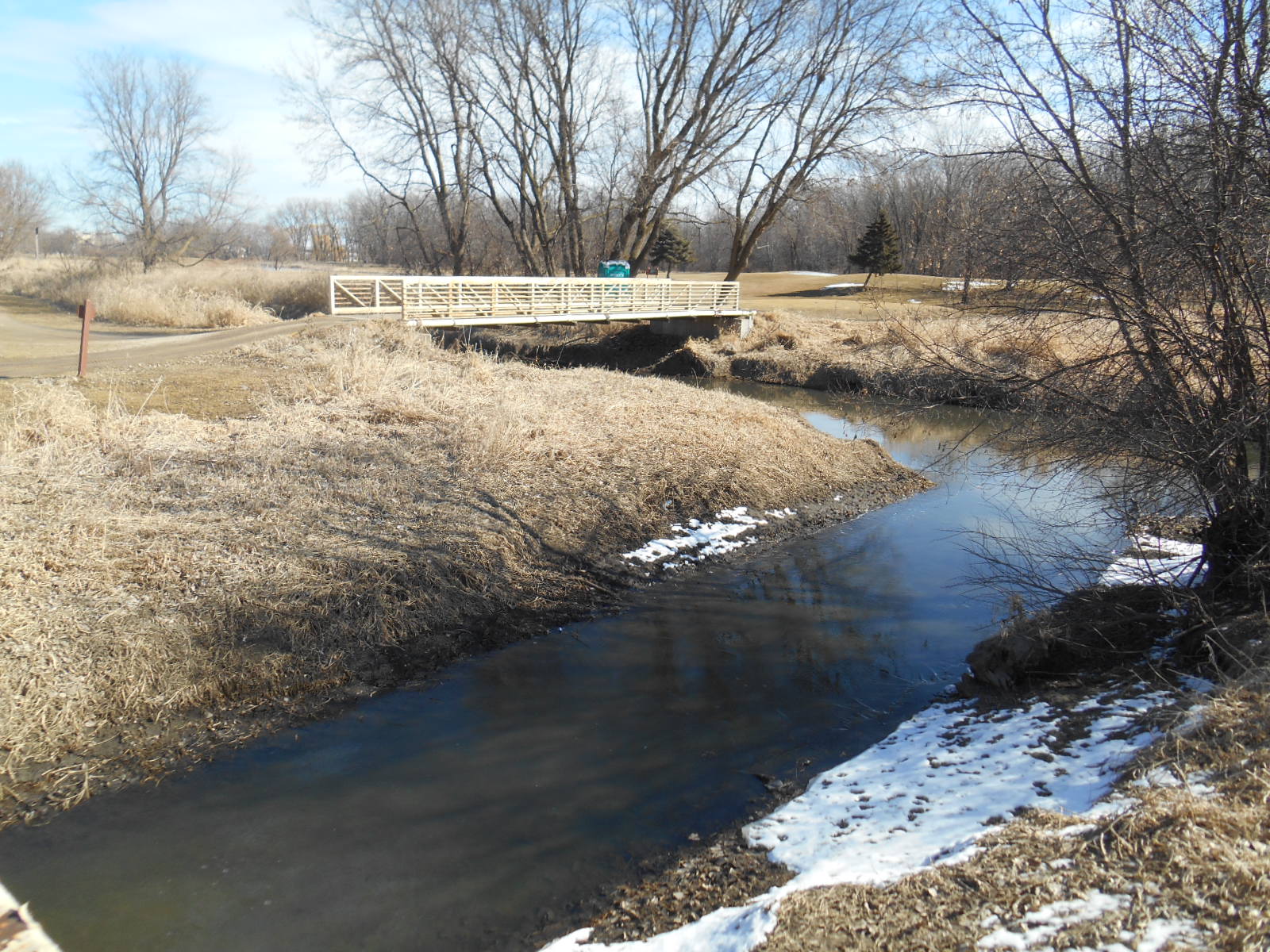Above: The “golf ditch” flowing through Bridges Golf Course into Starkweather Creek
*******
The last post, Madison’s Secret Superfund Site, described the long history of the Truax Landfill on Madison’s north side, and linked to the first four parts of this convoluted story (below):
Part I: What’s in the Truax Landfill? Part II: Toxic plume under the landfill, going towards Well 7: Who is responsible? Part III: DNR issues consent orders to city and county, Superfund negotiated behind closed doors. Part IV: The plot thickens: Consent order negotiations drag on, city/county consultants conclude landfill doesn’t affect Starkweather Creek, propose “passive remediation” (doing nothing)…
How was this politically contentious, poisonous mess finally “resolved?” A golf course was built over it! Read the details in Part V: Problem solved! County takes over Truax Landfill, Bridges Golf Course built over it.
Did the landfill leachate plume magically disappear, as the county would like us to believe?
What about the toxic leachate plume emanating from the landfill documented in a 1984 city report that began this sad saga (as described in Parts II & III linked above)?
According to many Truax Landfill reports written by Dane County’s consultants since then (and up to the present), “[t]here is no evidence that suggests a contaminant plume is migrating away from the landfill.” Consultants also try to suggest that many of the toxic chemicals and metals found in groundwater beneath it aren’t even from the landfill–they are from other area sources or are “natural” (yup, these dubious and laughable arguments are actually in writing, repeatedly, in reports submitted to DNR).
Apparently the leachate plume magically disappeared! Did it really? No. But nobody is testing to see where it is. So, “there is no evidence” of a plume. This is an age-old strategy for making pollution disappear: Don’t measure it, and it’s not there!
What about Well 7?
Where has the plume traveled over many decades? Has it reached Well 7, as the city’s 1984 report predicted it would?
Since Dane County consultants took over monitoring at the landfill (over 20 years ago), iron and manganese have been found in groundwater beneath it at levels exceeding state standards. Chlorinated solvents PCE and TCE have as well.
Well 7 has had an iron/manganese filter on it for several years. PCE was first detected in Well 7 a couple years ago. PFAS was also recently detected in the well.
Oddly, Madison Water Utility officials never mention the landfill as a source of contaminants to Well 7. They tell us iron and manganese are from “natural” sources–even though they are known to be common landfill contaminants.
It will be harder for them to claim that the PCE and PFAS are from “natural” sources.
Why doesn’t the Water Utility admit that leachates from the Truax Landfill may be contaminating Well 7? Perhaps because of the city’s significant responsibilities in creating the toxic landfill mess in the first place, before handing it off to the county in 1973–and after contamination was discovered there, bickering with the county for decades about who would pay to investigate it and clean it up?
Protecting public health not on city and county’s priority list
This sad saga illustrates that protecting public health–and being transparent with people about poisons in their air, waterways, and drinking water–are not top priorities for Madison and Dane County agencies and officials.
Perhaps this isn’t surprising, since (as described in Part III) the landfill PRPs (potentially responsible parties), including the city and county, agreed in 1990 after DNR issued the first draft consent order that their goals for the landfill investigation/remediation were to “avoid site being designated a Superfund site,” “avoid adverse publicity,” “permit development at air park” and “keep costs to a minimum.”
Protecting public health was barely mentioned in the decades worth of documents about the Truax Landfill that I reviewed–and it clearly isn’t a priority for the city and county now.
******
The Truax Landfill saga is based on reviews of old newspaper stories (from NewspaperArchive.com), publicly available government reports, and hundreds of government reports and communications obtained through open records requests. Given the many missing, withheld and/or incomplete public records–and numerous internal communications that were not written and therefore off the public record– there are a variety of unknowns and gaps in this story. Citations are removed. If you have questions about this history, know about details I didn’t include, and/or are interested in sources for any of specific points in the story, please email mariapowell@mejo.us.

